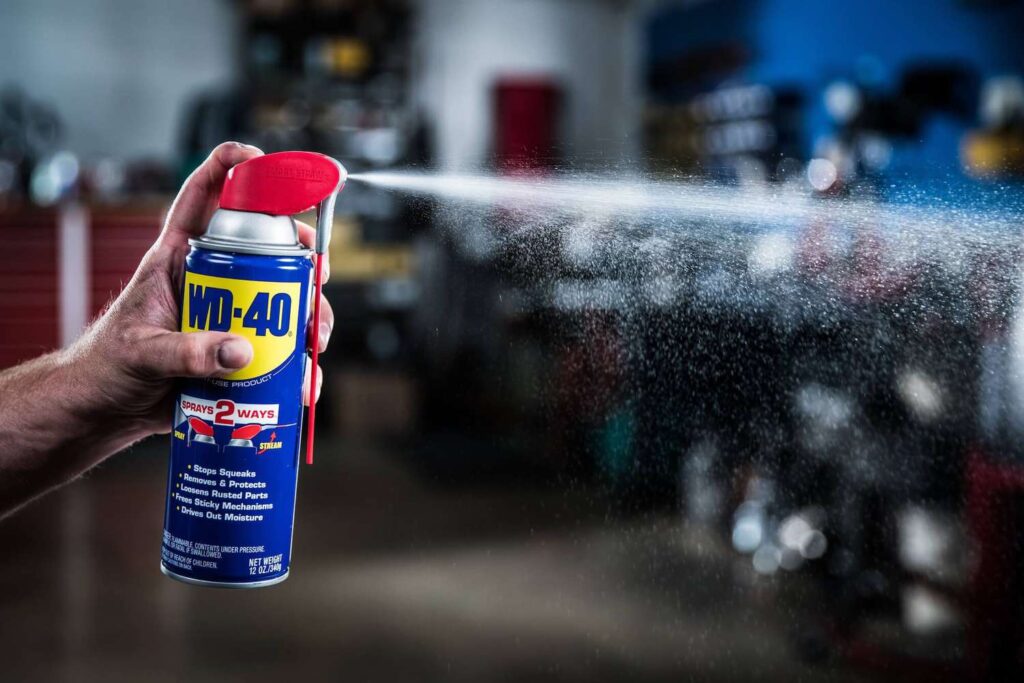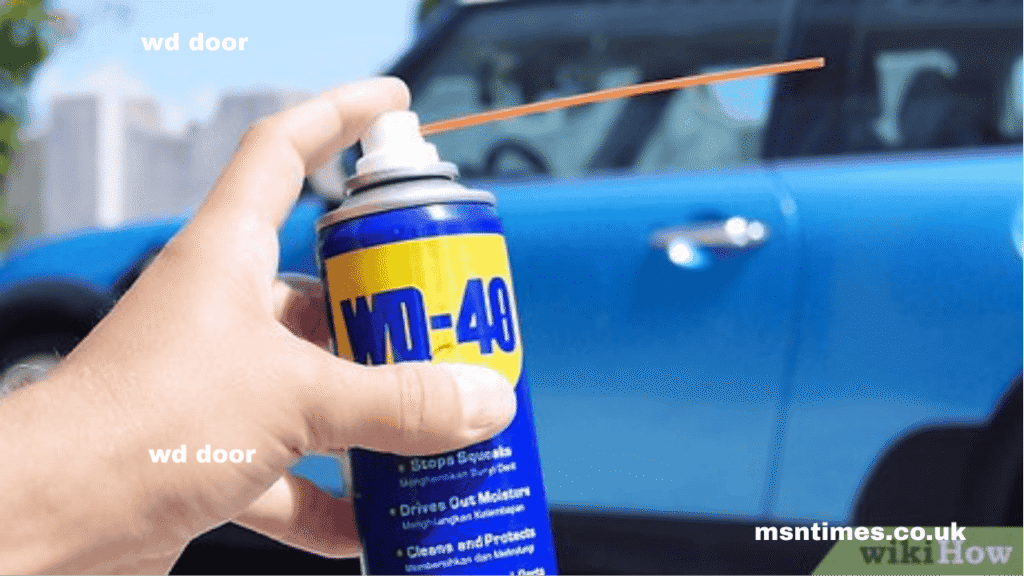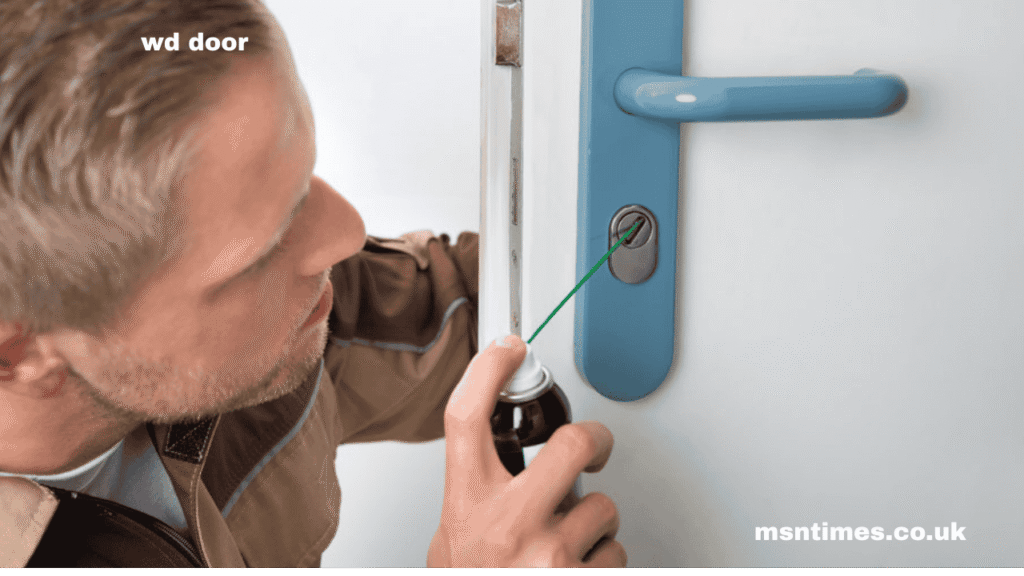Introduction: Understanding the WD Door Concept
When people mention “WD door,” they often refer to the widespread use of WD-40—a household lubricant—for doors, particularly for fixing common issues like squeaky hinges, jammed locks, or sticky handles. Whether it’s the persistent creak of an interior door or difficulty turning your front door key, WD-40 has built a reputation as a go-to solution. But how effective is it really? And are there any limitations or best practices when using it on various door components?
This article dives deep into the applications of WD-40 for door-related problems and addresses popular questions like “Can I use WD 40 on door lock?”, “Does WD 40 fix squeaky doors?”, and “How to fix squeaky door with WD-40?”
What Is WD-40 and Why Is It Associated With Doors?

WD-40 is a multi-use product designed to displace moisture, prevent rust, and lubricate moving parts. It’s widely recognized for its utility in fixing mechanical friction and reducing squeaky noise—making it a common solution for home maintenance tasks. When people refer to a “WD door,” they’re typically describing a door that has been maintained or fixed using WD-40.
The popularity of WD-40 stems from its accessibility and versatility. Found in nearly every hardware store and household toolkit, it has become a staple for minor repairs—particularly for things like door hinges, locks, and handles.
WD-40 on Car Door Hinges: A Quick Fix or Long-Term Solution?

One of the most frequent uses of WD-40 is on vehicle door hinges. Whether your car door creaks or doesn’t swing open smoothly, WD-40 offers a temporary fix that can make a noticeable difference.
Keyword usage: wd 40 on car door hinges
When sprayed directly onto car door hinges, WD-40 lubricates the metal joints and removes any built-up rust or grime. However, it’s essential to remember that while it can stop the noise and improve movement temporarily, it’s not a permanent fix. For long-term results, consider following up with a dedicated grease or silicone-based lubricant.
Can You Use WD-40 on Door Locks? Here’s the Truth

A commonly searched question is: “Can I use WD 40 on door lock?” or “Can you use WD 40 on door locks?” The answer is both yes and no—depending on your goal.
WD-40 can loosen up a sticky or jammed door lock, especially if there’s rust or grime causing the problem. A quick spray into the keyhole followed by a few turns of the key can restore functionality.
However, WD-40 is petroleum-based, which means it may attract dirt over time. So while it helps immediately, frequent use inside delicate lock mechanisms isn’t ideal. Locksmiths often recommend using a graphite-based lubricant for internal lock maintenance.
Keywords used:
- can i use wd 40 on door lock
- can you use wd 40 on door locks
Does WD-40 Fix Squeaky Doors?
Squeaky doors are an everyday annoyance, and WD-40 is frequently marketed as the remedy. But how does it actually perform?
Keyword usage:
- does wd 40 fix squeaky doors
- does wd 40 help with squeaky doors
Yes, WD-40 is highly effective at stopping door hinges from squeaking. A small spray on the top and bottom hinge, followed by swinging the door a few times to distribute the lubricant, typically resolves the issue within minutes.
However, keep in mind that WD-40 acts more like a solvent and water displacer than a long-term lubricant. While it helps eliminate squeaks temporarily, you might need a heavier lubricant or grease for a more lasting fix.
Step-by-Step: How to Fix Squeaky Door with WD-40
If you’re hearing that annoying creak every time someone opens or closes the door, follow these simple steps:
Keyword usage: how to fix squeaky door with wd-40
- Identify the Squeaky Hinge – Open and close the door slowly to find which hinge is causing the noise.
- Spray WD-40 – Shake the can and apply a small amount directly to the squeaky hinge.
- Open and Close the Door – Move the door back and forth several times to allow the WD-40 to spread through the hinge mechanism.
- Wipe Excess – Use a clean cloth to remove any drips or runoff to avoid staining wood or walls.
- Monitor the Fix – If the squeak returns in a few days, reapply or consider using a silicone spray for longer-lasting effects.
This method provides an immediate and satisfying fix for most interior and exterior doors.
WD-40 Maintenance Tips for Home Doors
Beyond squeaky hinges and jammed locks, WD-40 can be used for other door-related maintenance tasks:
- Stiff handles – Lubricate stuck or hard-to-turn handles for smoother operation.
- Rusty screws and plates – Spray and clean to remove rust buildup on metal door frames and screws.
- Sliding doors – Helps clean and lubricate tracks for patio or shower doors.
Always remember to test on a small hidden surface first if you’re working with painted or stained doors, as WD-40 can sometimes leave residue or react with finishes.
When Not to Use WD-40 on Doors
While WD-40 is incredibly versatile, there are times you should avoid using it:
- Wooden door surfaces – It may leave oily streaks that stain or damage the finish.
- Delicate electronic locks – The moisture-displacing properties might interfere with sensors or circuits.
- High-traffic lock cylinders – Overuse can gunk up the mechanism due to dust attraction.
In such cases, always consult a professional or choose a lubricant that is explicitly designed for the job.
Conclusion: Is WD-40 the Best Choice for Door Issues?
In short, WD-40 can be a reliable quick fix for most door-related problems. Whether you’re dealing with car door hinges, squeaky home doors, or sticky locks, this versatile spray can often solve the issue in seconds.
However, while it shines as a first-aid tool in your toolbox, it’s best used in combination with long-term solutions—like silicone sprays or graphite lubricants—for optimal door maintenance.
